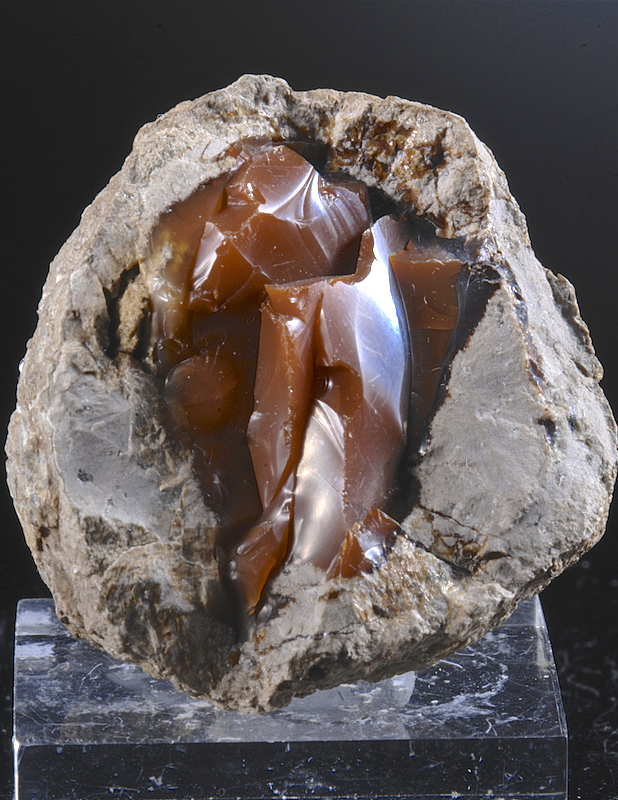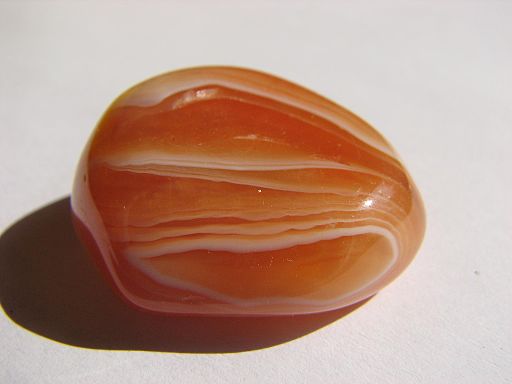Carnelian
Carnelian is an opaque to translucent type of chalcedony that’s usually a red-orange color. Its color comes from iron, and if you heat up carnelian, it’ll turn a darker red as the heat causes the iron to oxidize. Although not the most popular gemstone these days, in ancient times it kept company with amethyst, ruby, emerald, and others and was used in beads, signet rings, wax stamps, the covers of jewel-encrusted bibles, etc. In medieval times, its name was actually “cornelian,” which was based on the Latin word for “cherry,” but at some point someone started spelling it wrong as “carnelian,” which, unfortunately, is closer to the Latin word for “flesh.” Maybe we should go back to the old name? One exception to carnelian being out of style is that the state of Maryland has a kind of carnelian called Patuxent River stone that it named the state gem much more recently than ancient times–2004.
| Formula | Group or Type | Shape | Hardness | Specific Gravity | Streak | Luster |
|---|---|---|---|---|---|---|
| SiO2 | Quartz: Chalcedony | — | 7 | 2.6–2.7 | White | Vitreous to waxy |

